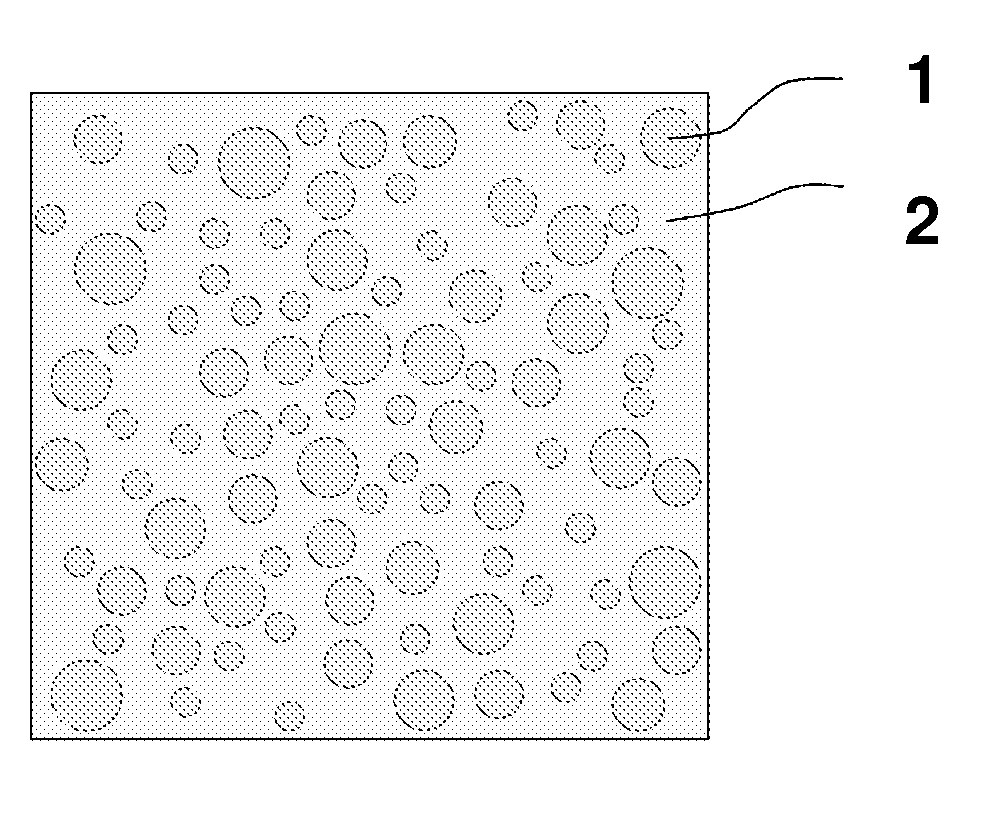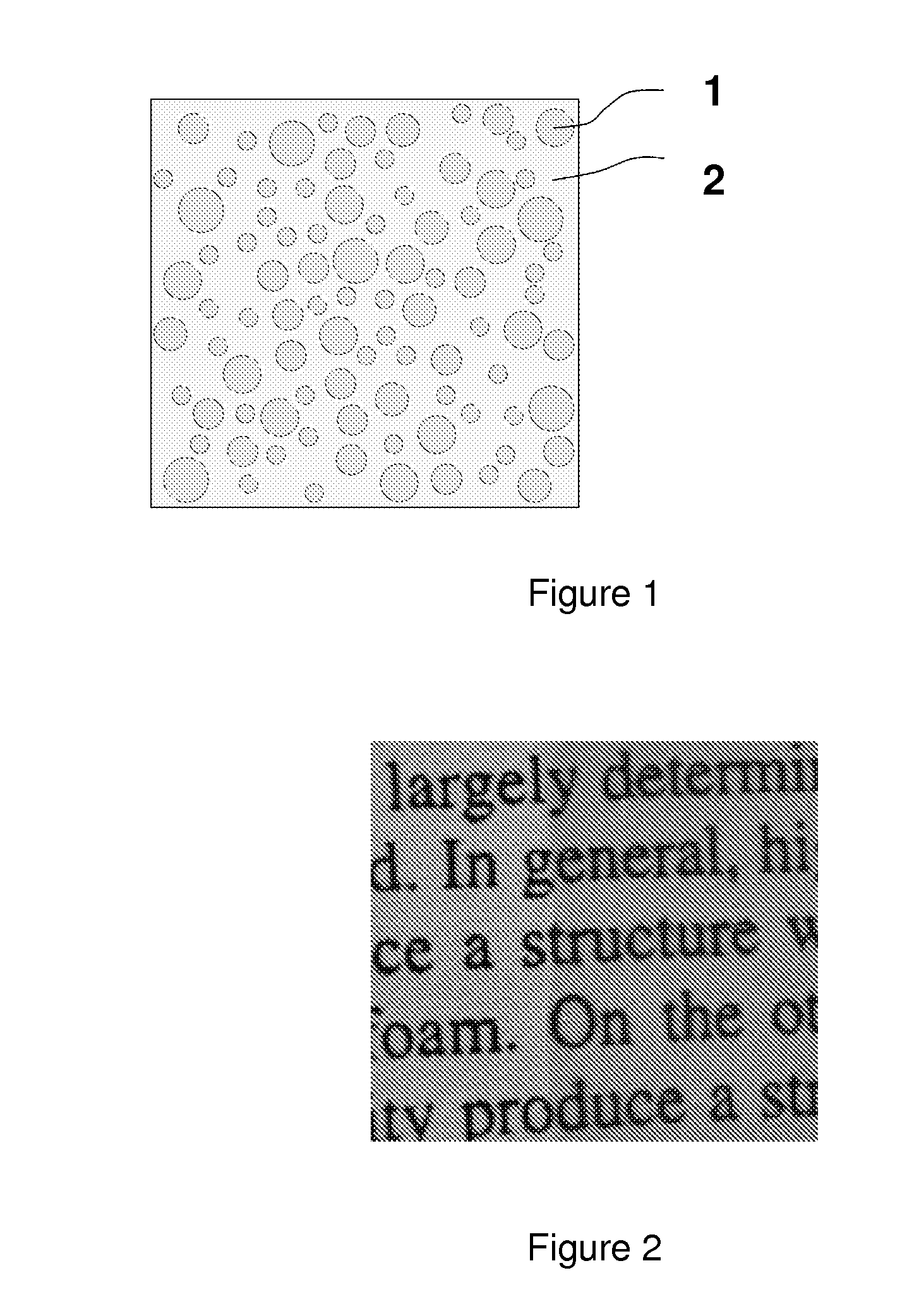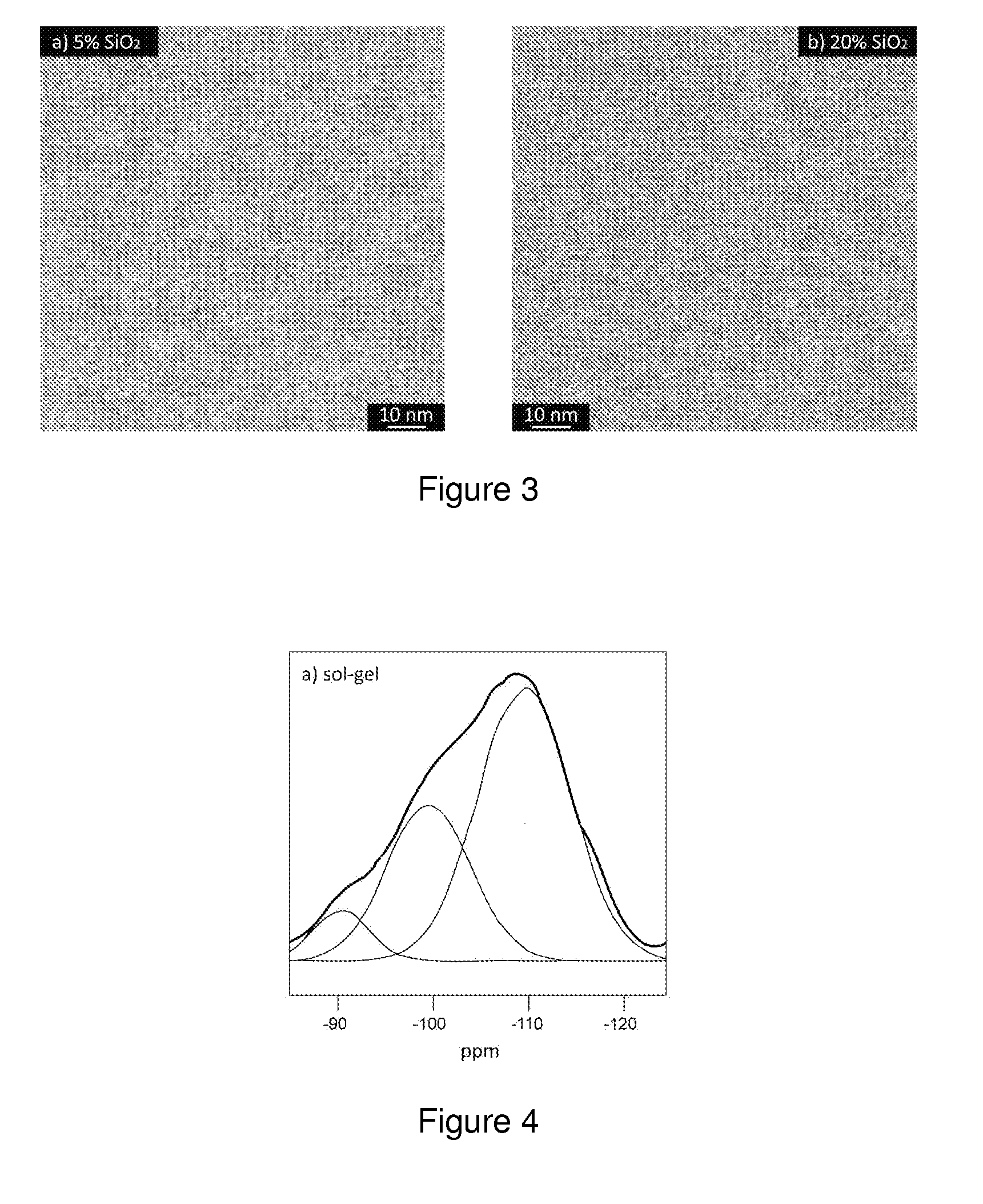Dual cure compositions, related hybrid nanocomposite materials and dual cure process for producing same
- Summary
- Abstract
- Description
- Claims
- Application Information
AI Technical Summary
Benefits of technology
Problems solved by technology
Method used
Image
Examples
Embodiment Construction
[0101]Hybrid low-stress materials were produced using a dual-cure process method with a composition comprising an acrylated hyperbranched monomer, TEOS as the sol-gel precursor and MEMO as a coupling agent, and their thermo-mechanical properties and stress were compared with the properties of a nanocomposite material obtained using a conventional solvent assisted mixing process.
[0102]Synthesis of a Hybrid Material
[0103]The hyperbranched monomer was based on a 3rd generation hyperbranched polyether polyol, giving a 29-functional hyperbranched polyether acrylate (HBP, Perstorp AB, Sweden). The photoinitiator was 1-hydroxy-cyclohexyl-phenyl-ketone (Irgacure® 184, Ciba Specialty Chemicals). 1 wt % of photoinitiator was dissolved in the HBP while stirring at 70° C. in an oil bath for 30 min. Following references to HBP will always refer to the mixture of HBP with 1 wt % photoinitiator. Tetraethyl orthosilicate (TEOS, Sigma Aldrich) was used as a precursor and methacryloxy(propyl) trimeth...
PUM
| Property | Measurement | Unit |
|---|---|---|
| Temperature | aaaaa | aaaaa |
| Temperature | aaaaa | aaaaa |
| Fraction | aaaaa | aaaaa |
Abstract
Description
Claims
Application Information
 Login to View More
Login to View More - R&D
- Intellectual Property
- Life Sciences
- Materials
- Tech Scout
- Unparalleled Data Quality
- Higher Quality Content
- 60% Fewer Hallucinations
Browse by: Latest US Patents, China's latest patents, Technical Efficacy Thesaurus, Application Domain, Technology Topic, Popular Technical Reports.
© 2025 PatSnap. All rights reserved.Legal|Privacy policy|Modern Slavery Act Transparency Statement|Sitemap|About US| Contact US: help@patsnap.com



